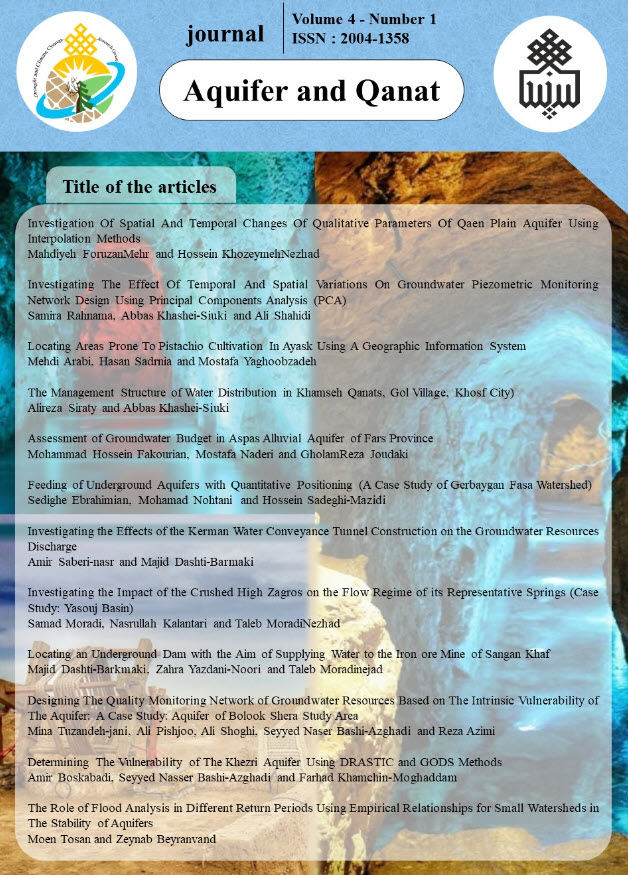Document Type : Original Article
Authors
1 PhD Student, Department of Range and Watershed Management, Faculty of Agriculture and Natural Resources, Lorestan University, Khorramabad, Iran.
2 Assistant Professor, Department of Range and Watershed Management, Faculty of Water and Soil, University of Zabol, Zabol, Iran.
3 PhD Graduate, Department of Range and Watershed Management, Faculty of Agriculture and Natural Resources, University of Hormozgan, Bandar Abbas, Iran.
Abstract
In this study, the quantitative zoning is used to identify areas suitable for artificial recharge in the mountainous area of Gohar and Garbayegan plain, Fars province fitting a linear fundamental form to the surface. The structures with grade two for triplex windows and the data from the digital elevation model with a resolution of 10 m was used to determine the best fitable fundamental structure. The sum of square differences of the surface differences is used as an indicator to determine the degree of fitting the fundamental structures. By fitting the interpretable patterns to the Earth's surface it can be determined that the earth was similar to what pattern and formation mechanism. Mountain ranges upstream alluvial cones and plains located downstream of the upstream alluvial cones are not linear levels. Places which are not at the acceptable slope (gradient less than 0.002 and higher than 0.1) allocated to the zero fitting degrees and the fitting degree values are positive in alluvial cones and areas fall in the acceptable range of the slope. The results show that the surfaces located downstream of the alluvial cones and the plains are most suitable areas for floodwater spreading in the Garbayegan watershed.
Keywords
Main Subjects

